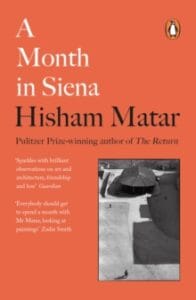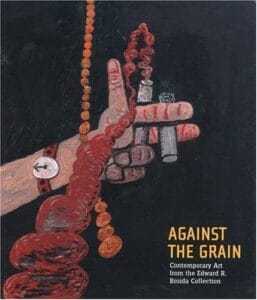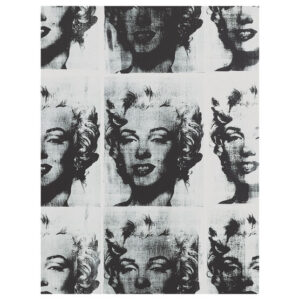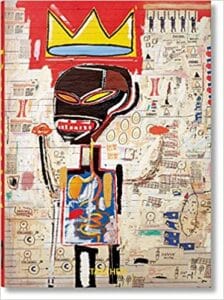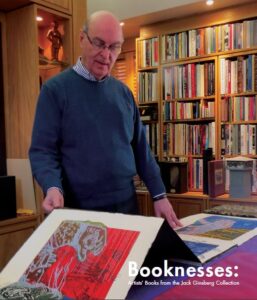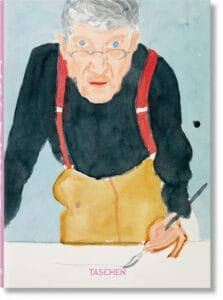Showing 1–16 of 189 results
-

R225Matar was nineteen years old when his father was kidnapped. In the year following he found himself turning to art, particularly the great paintings of the Sienese School.
They became a refuge and a way to think about the world outside the urgencies of the present. A quarter of a century later, having found no trace of his father, Matar finally visits the birthplace of those paintings. A Month in Siena is the encounter between the writer and the city.
-

R500In A Programme of Absolute Disorder, Françoise Vergès puts the museum in its place. Exploring the Louvre’s history, she uncovers the context in which the universal museum emerged: as a product of colonialism, and of Europe’s self-appointed claim to be the guardian of global heritage.
-

R280This catalogue was published as the companion publication to the exhibition ‘Africa Meets Africa: The African Collection of the Museum of Ethnology Rotterdam’. The exhibition tour is sponsored by the Mondriaan Stichting.
-

R150An educational resource about using ancient art and current cultural artifacts to teach Sub-Saharan African civilization to the young. This resource consisting of a video and an interactive resource book, offers teachers and learners a means of exploring creativity by introducting museums and galleries as rich educational resources that expose the wealth of African cultural…
-
 Out of stock
Out of stock
R1500Modern and Contemporary African art is at the forefront of the current curatorial and collector movement in today’s art scene. This groundbreaking new book, created in collaboration with a prestigious global advisory board, represents the most substantial appraisal of contemporary artists born or based in Africa available
-
 Out of stock
Out of stock
R400This catalogue of outstanding paintings, sculptures, drawings and prints from Edward R. Broida’s recent gift of 175 contemporary works from his collection to The Museum of Modern Art reflects a wide range of artistic approaches. Most pieces were created after 1960; several artists, such as Vija Celmins, Philip Guston, Ken Price and Christopher Wilmarth, are represented in depth. The Broida collection also includes works by Richard Artschwager, Jake Berthot, Martin Puryear, Susan Rothenberg, Joel Shapiro, Mark di Suvero and John Walker, among others, and significant works by Jennifer Bartlett, Bruce Nauman and Richard Serra that provided important additions to the Museum’s holdings. This book includes an introduction to the collection by John Elderfield, the Marie-Josee and Henry Kravis Chief Curator of Painting and Sculpture, and an interview with Broida conducted by Ann Temkin, Curator of Painting and Sculpture. The plate section reproduces at least one work by each of the 38 artists included in the gift, and in many cases numerous works by one artist.
-

R630Offering up new insight into Andy Warhol’s expanded art practice, presenting his life and work within the context of his time, this outstanding paperback exhibition catalogue emphasises how Warhol continues to be a relevant figure in a digital age. With illustrations of familiar and lesser-known aspects of Warhol’s career, an interview with former Factory insider,…
-

R500Great paintings cannot be fully understood in a single encounter; there is always more to be derived from them. Art lovers may revisit and reconsider the masterpieces throughout their lives, but a deeper understanding can only be gained by analysing the painting in detail, be it the placement of the subject, the lighting, the style of brushstrokes or the themes.
-
Sale!

R750 Original price was: R750.R670Current price is: R670.Basquiat’s expressive style was based on raw figures and integrated words and phrases. His work is inspired by a pantheon of luminaries from jazz, boxing, and basketball, with references to arcane history and the politics of street life?so when asked about his subject matter, Basquiat answered “royalty, heroism and the streets.”
-

-

R500The exhibition Booknesses: Artists’ Books from the Jack Ginsberg Collection formed part of the larger Booknesses enterprise. The exhibition, consisting of 229 international and 29 local artists’ books and an extensive catalogue, was one of the largest and most ambitious exhibitions of its kind globally. Curated by David Paton, with the assistance of Rosalind Cleaver and Jack Ginsberg, the…
-
 Out of stock
Out of stock
R400This unique book makes visual arts truly come alive for learners! It is in full colour (never done before), has a comprehensive chapter on visual literacy skills, covers the different themes by not only giving the historical background and characteristics but also an in-depth analysis of artworks, application activities as well as a section relating…
-
Sale!

R280 Original price was: R280.R150Current price is: R150.‘The first ever full colour Design textbook designed for designers by designers’
Available in English and Afrikaans
-

R550It is 2022, just over a century since the founding of arguably the world’s most widely celebrated art and design school. In 2019, on the occasion of the Bauhaus’ centenary, the world’s media focused on the various ‘legacies’ of this school. Such retrospective appraisals of Bauhaus moment(s), movement(s) and model(s) demonstrate that the school has certainly not gone missing. Using the notion of verfehlen/missing as a point of departure, these time-travelling and varied contributions from the Global South posit different ways in which the word missing may be applied to the Bauhaus: Contributors from arts, architecture and design backgrounds raise and critique a range of problematic aspects attached to a nostalgic position of longing for the Bauhaus and reveal numerous instances of how the school’s mythologised model, freighted with Western confidence and hardheadedness, often simply misses, and continues to miss the point.
-
Sale!

R750 Original price was: R750.R675Current price is: R675.Pop artist, painter of modern life, landscape painter, master of color, explorer of image and perception?for six decades, David Hockney has been known as an artist who always finds new ways of exploring the world and its representational possibilities.
-

R170Catalogue of the Exhibition, Wits arts Museum, 2014 This publication accompanies an exhibition of the same title at Wits art Museum, 20 August – 2 November 2014.

